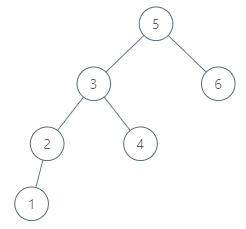C++
Java
Python
Python3
C
C#
JavaScript
TypeScript
PHP
Swift
Kotlin
Go
Ruby
Scala
monokai
ambiance
chaos
chrome
cloud9_day
cloud9_night
cloud9_night_low_color
clouds
clouds_midnight
cobalt
crimson_editor
dawn
dracula
dreamweaver
eclipse
github
github_dark
gob
gruvbox
gruvbox_dark_hard
gruvbox_light_hard
idle_fingers
iplastic
katzenmilch
kr_theme
kuroir
merbivore
merbivore_soft
mono_industrial
nord_dark
one_dark
pastel_on_dark
solarized_dark
solarized_light
sqlserver
terminal
textmate
tomorrow
tomorrow_night
tomorrow_night_blue
tomorrow_night_bright
tomorrow_night_eighties
twilight
vibrant_ink
xcode
上次编辑到这里,代码来自缓存 点击恢复默认模板
/*
// Definition for a Node.
class Node {
public:
int val;
Node* left;
Node* right;
Node* parent;
};
*/
class Solution {
public:
Node* inorderSuccessor(Node* node) {
}
};
运行代码
提交
golang 解法, 执行用时: 8 ms, 内存消耗: 6.1 MB, 提交时间: 2023-10-22 10:44:45
/**
* Definition for Node.
* type Node struct {
* Val int
* Left *Node
* Right *Node
* Parent *Node
* }
*/
func inorderSuccessor(node *Node) (ans *Node) {
root := node
for root.Parent!=nil {
root=root.Parent
}
for root!=nil {
if root.Val>node.Val {
ans=root
root=root.Left
} else {
root=root.Right
}
}
return
}
cpp 解法, 执行用时: 24 ms, 内存消耗: 11.8 MB, 提交时间: 2023-10-22 10:44:24
/*
// Definition for a Node.
class Node {
public:
int val;
Node* left;
Node* right;
Node* parent;
};
*/
class Solution {
public:
Node* inorderSuccessor(Node* node) {
if (node->right) //有右子 右子树的最左下
{
node = node->right;
while (node->left)
node = node->left;
return node;
}
else
{
while(node->parent && node == node->parent->right)
node = node->parent;
return node->parent; //是父结点的左子了 返回父结点
}
}
};
python3 解法, 执行用时: 68 ms, 内存消耗: 23.5 MB, 提交时间: 2023-10-22 10:44:03
"""
# Definition for a Node.
class Node:
def __init__(self, val):
self.val = val
self.left = None
self.right = None
self.parent = None
"""
class Solution:
def inorderSuccessor(self, node: 'Node') -> 'Node':
if node.right: #有右子 则是右子树的最左下
node = node.right
while node.left:
node = node.left
return node
else:
while node.parent and node.parent.right == node:
node = node.parent
return node.parent
java 解法, 执行用时: 32 ms, 内存消耗: 42.9 MB, 提交时间: 2023-10-22 10:43:41
/*
// Definition for a Node.
class Node {
public int val;
public Node left;
public Node right;
public Node parent;
};
*/
class Solution {
public Node inorderSuccessor(Node x) {
if (x.right != null) {
// 有右子树,则后继在树的相对较低的地方,往下走,尽量往右子树的左边走
x = x.right;
while (x.left != null) x = x.left;
return x;
}else {
// 没有右子树,则后继在树的相对较高的地方,往上找
// 直到找到一个祖宗节点 tmp,它是它父节点的左子节点
while (x.parent != null && x == x.parent.right) x = x.parent;
// x.parent == null 或 x == x.parent.left
return x.parent;
}
}
}


